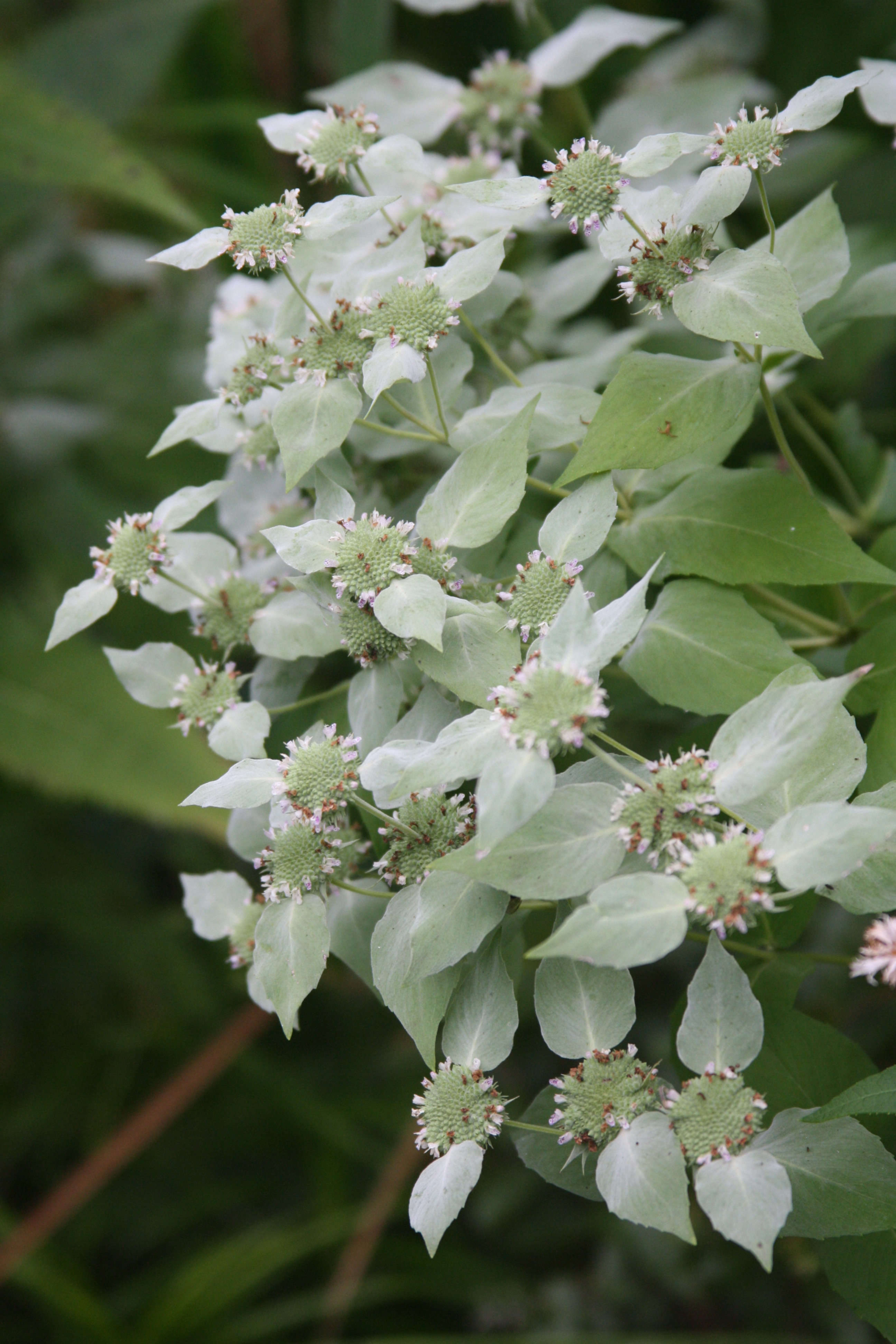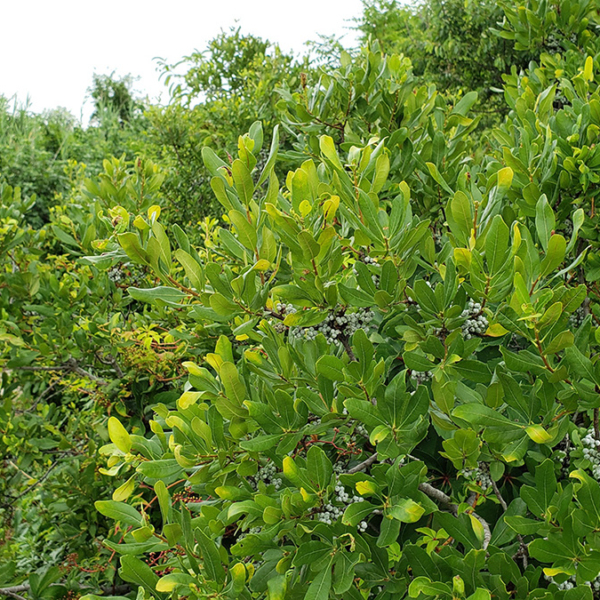Mountain Mint, Pycnanthemum
It seems most of us gardeners love mint—as long as it’s in other people’s gardens, in tea, or in mixed drinks. In our own yards, plants from the Mentha genus—be it peppermint, spearmint, chocolate, or apple mint (yes, there’s a mint that has an apple scent)—all tend to spread beyond their allotted spot. Mint does this via underground runners and can easily take over an entire bed in just one season. Best then to grow it in a container.
Why even consider planting a mint in the garden given its aggressive behavior? Because there’s a mint that will respect your boundaries: mountain mint. If it spreads at all, it spreads very slowly, making it easy to rein it back in if it does stray. It has a long blooming season that lasts two to three months. It is a wonderful native source of nectar for pollinators. And it can crowd out weeds and stabilize hillsides.
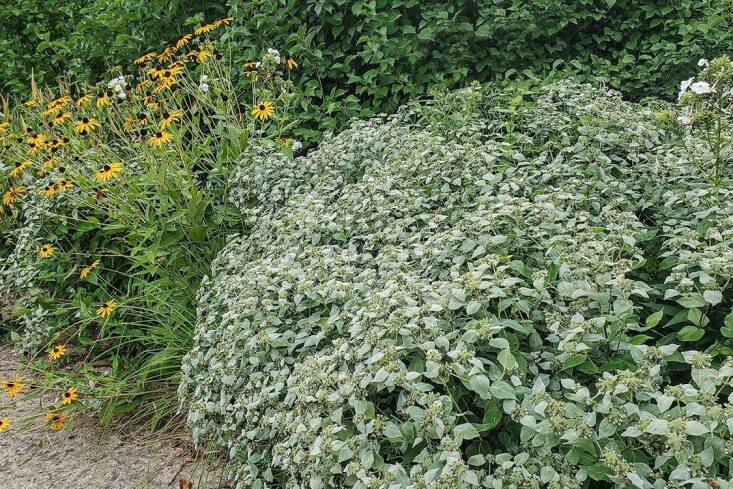
There are about 20 types of mountain mint, mostly differentiated by the leaf shape, which ranges from heart shaped to needle shaped, with many shapes in between. Leaf color is dark green to silver green bracts at the flower heads. And like most mint family members, it has a square stem. Its compound round flower head has many tiny flowers, opening over the course of two to three months starting in June.
Mountain mint is not nearly as badly behaved as its mint cousins and, in fact, is one of the best plants to have in your garden if you want to attract pollinators. According to a 2013 Penn State study of flowering herbaceous perennial plant species, clustered mountain mint (Pycnanthemum muticum) attracted the most pollinators—over 78 insect visitors compared to the runner-up plant, gray goldenrod with 36 insects.
Cheat Sheet
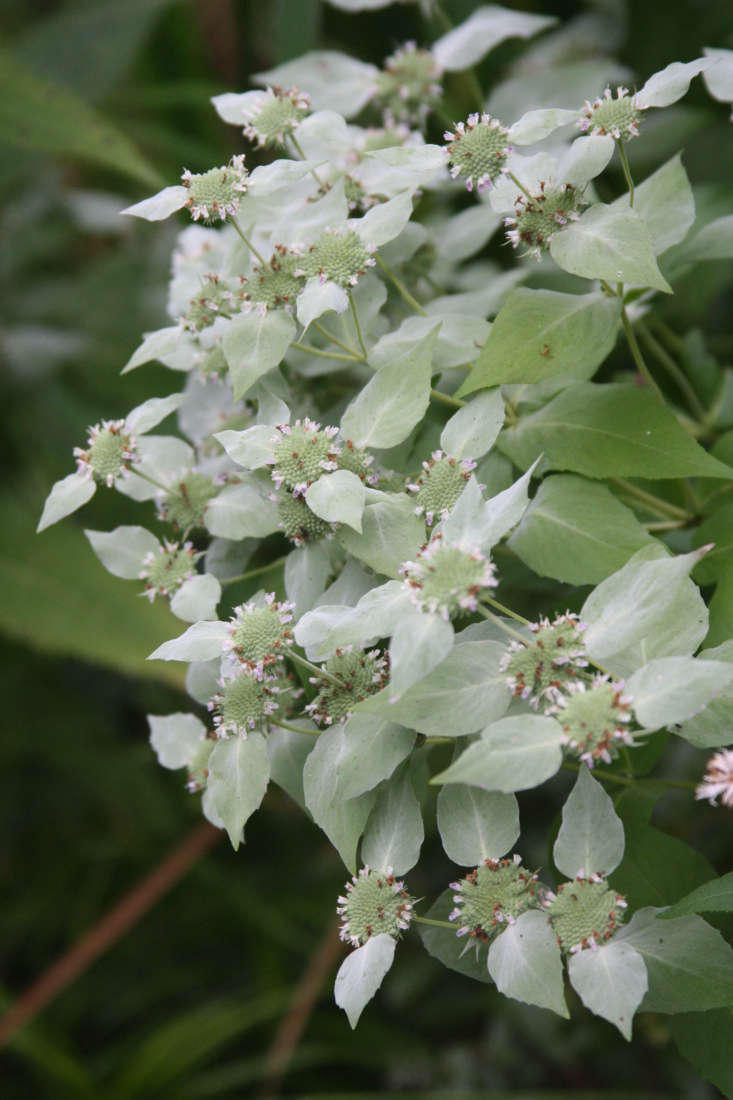
- Flower color is mainly white; some varieties have pale pink or pale lavender flowers.
- While the name has the word mountain in it, this plant prefers open fields.
- Native to the east coast of the US within zone 4 through 8.
- It has a pleasant but sometimes medicinal mint aroma when the leaves are crushed.
- Very unattractive to deer and rabbits!
- Very attractive to native pollinators!
- Plants can grow from one to three feet tall and can spread a foot to three feet wide.
- Great for naturalizing. The lower growing varieties can be used as a ground cover.
Keep It Alive
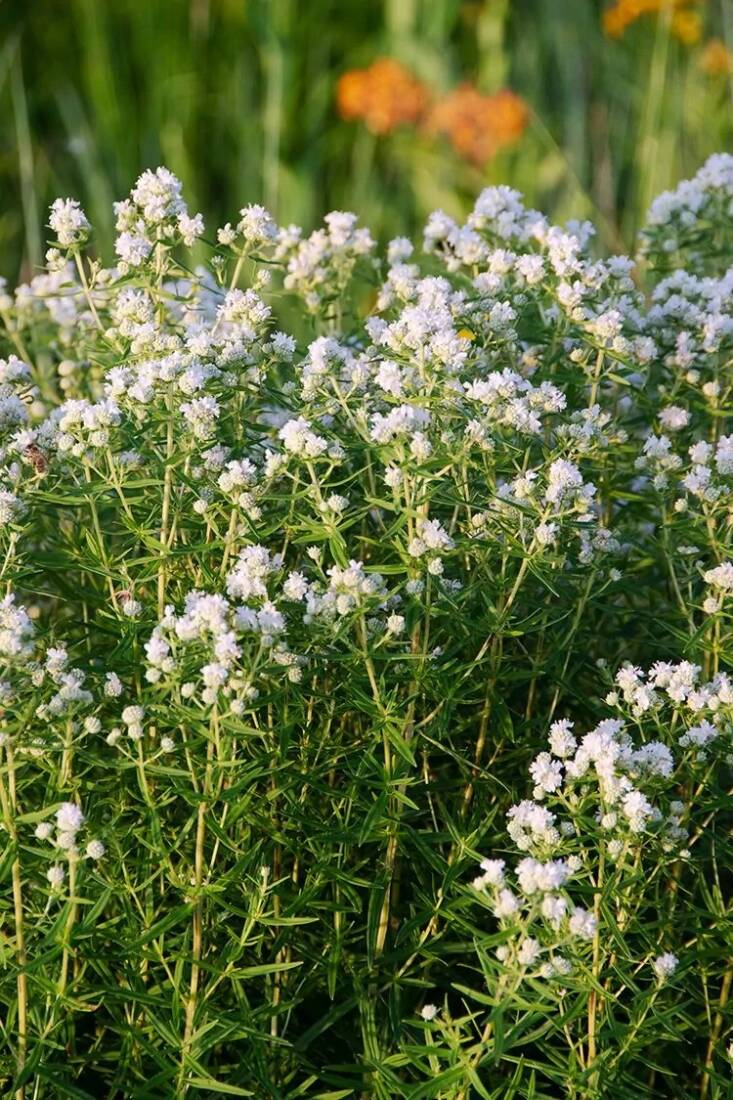
- Mountain mint likes full sun to light shade. The more sun it gets, the more flowers it will have.
- The taller varieties should be planted towards the back of the garden beds. Cutting the plants back when they are about two feet tall will make them grow back bushier and less leggy.
- It prefers fertile, well-draining soil. It does not like to have “wet feet.” The soil can be neutral to slightly acidic.
- Mountain mint is drought tolerant once established but should be watered during extended periods of drought.
- Should the plant extend itself outside of the area you intended it to stay, cut the roots with a shovel and pull out the straying plants.
- The plant is very low maintenance with few diseases or pests.
See also:
(Visited 1 times, 1 visits today)
